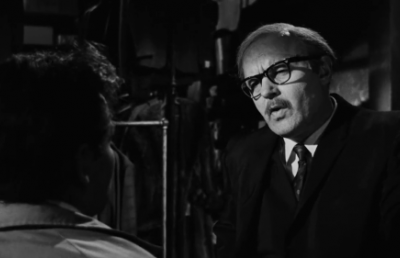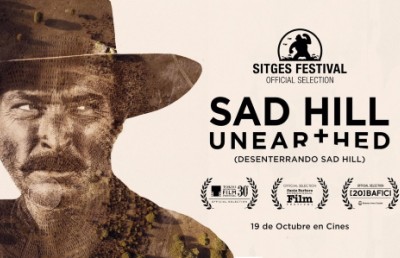Revisiting Accattone (Pier Paolo Pasolini, 1961)
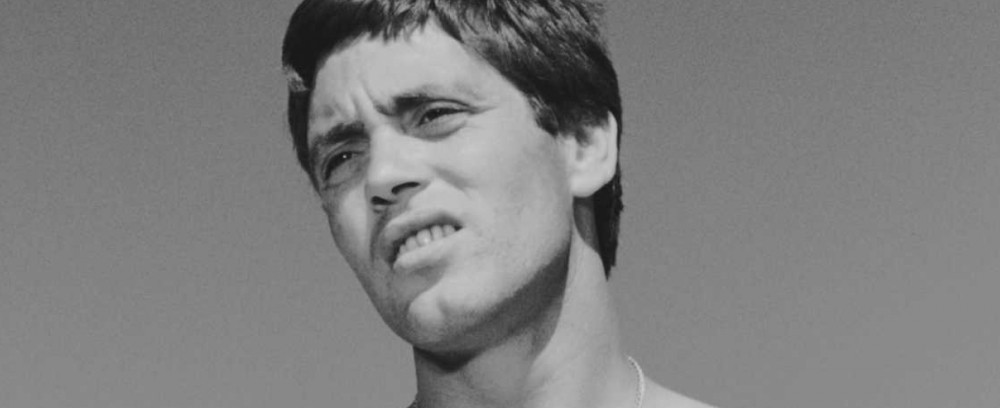
A poet, a novelist and a writer of essays, Pier Paolo Pasolini made his first film, Accattone, when he was almost forty years old. Pasolini had, however, already collaborated on many other films: Fellini’s Notti di Cabiria (1957), Bolognini’s Il Bel Antonio (1959), La Notte brava (1959), La Giornata balorda (1960), and Bertolucci’s La Commare Secca (1962).
Accattone was released in 1961. Accattone, known in the U.S.A. as Accattone! and The Scrounger, and The Procurer in the U.K., means “beggar” in English. It is based on Pasolini’s 1959 novel Una vita violenta (A Violent Life). According to Pasolini specialist, Marc Gervais, with whom I had the honor of studying in the early 1970s, Accattone was an “honorable film” which was well received by the Italian press. Gervais wonders why?
The film didn’t stand out at the time: the period in which Accattone was made (from 1959 to 1963) is considered by many as being one of the most creative years in the history of cinema: Fellini, Bergman, Hitchcock, Visconti, Bresson, Antonioni, Olmi, Godard, Truffaut, Cassavetes, Monicelli, Chabrol, Camus (Black Orpheus), Rohmer and so many other fine filmmakers would alter the way we experienced film as an art medium. Yet Accattone has aged remarkably well.
With neo-realism à la De Sica and Rossellini being pushed to the margins, Pasolini and his Accattone came to be viewed as the birth of a new form of neo-realism. Pasolini openly proclaimed the fact that he was a Marxist and an atheist and was openly critical of the tendency of filmmakers for being bourgeois Christian Democrats.
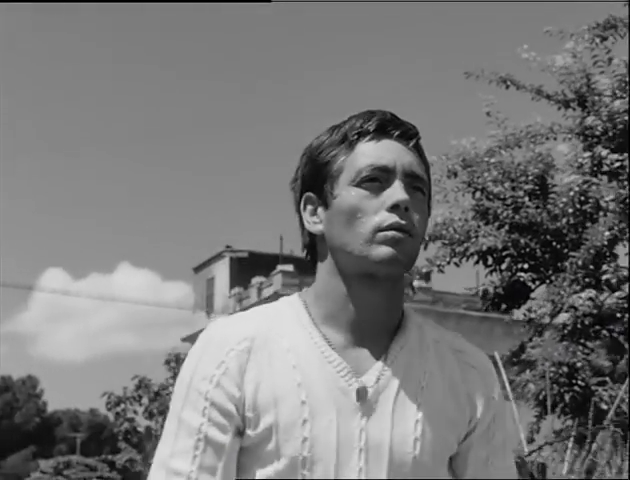
Accattone (Franco Citti)
Pasolini in an 1965 interview published in Film Quarterly (Summer 1965): “Everyone . . . believed that the world of the urban underclass no longer existed. What was I to do with the twenty million members of the urban underclass? Lock them up in concentration camps? Throw them in gas chambers? The general attitude people had towards the urban underclass was almost racist, as though these people belonged to a world community that no longer existed. People said that the urban underclass was a book that had been read; nevertheless, the urban underclass was still very much alive” (my translation).
To illustrate this point I would like to compare the scene where the friends are sitting outside of some bar with a similar scene Fellini filmed in I Vitelloni released in 1953. Both films depict a bunch of Roman unemployed men, yet how different the men are. In Fellini’s film, the men seem typically bourgeois even though they too are unemployed. In Pasolini’s film, the men are also unemployed but they have something else about them. I was going to say “more” but in fact they have something “less” than the unemployed depicted by Fellini. These men do not live in the beautiful city of Rome. They live in a slum (borgate) at the outskirts of the city. The setting might be urban but it is looks more like an inner city hood devastated by an atomic bomb. These men are members of the lowest of the lowest urban poor. This geography of spoilage is there to remind us that these people belong to the underclass, almost outside of city life.
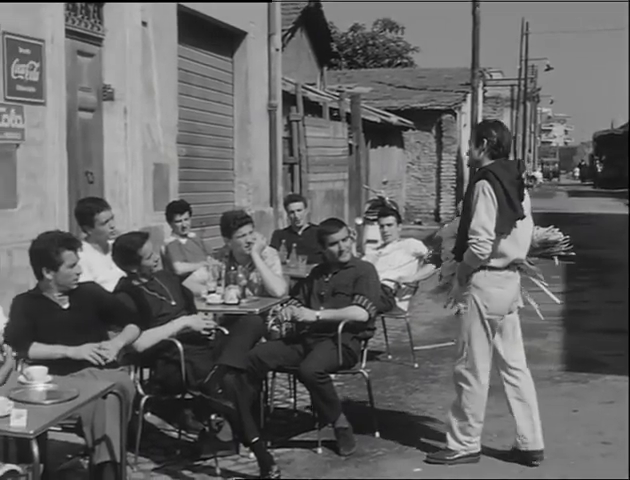
Pasolini’s Vitelloni
Pasolini knew the urban underclass very well. He lived with the unemployed in their neighbourhood, and went on to teach their children. What Pasolini shows in Accattone is the Rome that no tourist would ever want to visit.
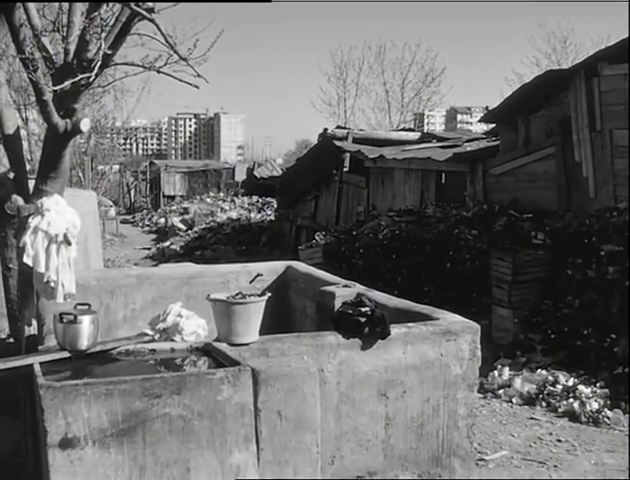
Borgate
To act in the film he hired people who lived in the hood who he transformed into Greek mythological prophets. Fellini employed professional actors who played simple men and women.
Cesare Zavattini: “Upon this elementary situation it is possible to build a film. All we have to do is discover and then show all the elements that go to create this adventure, in all their banal ‘dailiness,’ and it will become worthy of attention, it will even become ‘spectacular.’ But it will become spectacular not through its exceptional, but through its normal, qualities; it will astonish us by showing so many things that happen every day under our eyes, things we have never noticed before.”
Accattone displays the marks of being obviously influenced by neo-realism: Pasolini uses real settings; shoots these settings in long takes; often uses the panoramic shot; employs non-professional actors; films what André Bazin calls “Images-faits” (“image facts”: whereby objects and people are filmed in such a way that their meaning becomes clear only after the fact, once compared to what came before and after the shot); and with all this realism something seems yet unnatural. Something more than reality is shown. What we see is reality to the power of two. Roland Barthes labelled this as “pseudo-natural.” Precisely, nature revisited by culture. What Paul Schrader called the Transcendental. Realism is stretched to encompass another kind of reality. As Marc Gervais suggests, contrary to many neo-realist films, in Accattone we immediately sense the presence of the filmmaker.
How is this something-more-than-reality brought up to the foreground? Characters appear up front, in close-up, as if talking to the spectator. One character is so close to the camera that we are shown only his eyes (a trick which Sergio Leone would use in his spaghetti Westerns). What we have here is no longer simple realism, nor is it neo-realism: this is hyper-realism, realism to the power of 2.
In an theoretical article published in Le Cahiers du cinema, Pier Paolo Pasolini explained how he considered cinematographic writing as composed of “Im-signes” (“Im-signs,” 100): these were the filmic equivalent of Barthes’ “Lin-signs,” that is, a semiological formula by which one assigns special meanings to cinematographic images. Cinema is used to express a different sort of reality by using realism. It is as though we got so close to the details of reality that they no longer represent the reality that we see on the screen.
Pasolini insisted in his interviews with critic Jean Duflot (Pasolini: Entretiens avec Pier Paolo Pasolini, Éditions Pierre Belfond, 1970) that, no matter what “symbol” one uses in film, this sign must arise from the use of a real object, it is this image of the real object that is now used to express a thought. That is, by showing a real object the real object gets transformed into something else.
An object becomes a window through which we view another landscape. “Chaque signe est l’objet réel, signe de lui-même” (101) [“Every sign is the real object, the sign of itself.”] This is where I believe Pasolini does what had not been done before in Italian cinema: he uses reality to express what he called the sacralité (sacredness). In Pasolini’s hands the microscope becomes a telescope.
Pasolini himself believed what he called sacredness to be very much present in Accattone: “Quand je fais un film, je me mets en état de fascination devant un objet, une chose, un visage, des regards, un paysage comme s’il s’agissait d’un engin où le sacré fût en imminence d’explosion“ [“When I film I enter a state of total fascination before an object, a thing, a face, eyes, or a landscape as though they are a machine waiting to eject sacredness.”]
Pasolini was a non-believer. Though he claimed to have a religious sense of life, he did not believe in the divine. He considered many things religious as being elements of the general culture of a country.
Accattone: what is this film about? On the immediate diegetic level, it is about Accattone (Vittorio Cataldi), a pimp who loses Maddalena, the whore, his source of revenue; he is then forced to find a second woman, Stella, to replace Maddalena (what’s in this name?), and when Stella is unable to fulfil her duty as a whore Accattone convinces himself (and with the help of his brother) to find legal work. Manifestly Accattone is not up to physical labour and so quits, and goes back to stealing, but unfortunately gets cut and dies in a motorcycle crash.

Maddalena (Silvana Corsini)
I would like to suggest that this narrative (fabula) does not tell the complete story that is presented on the screen. Clearly, this narrative of the beggar is the first level of narrativity. There is a second narrative, at the second level, that is simultaneously unfolding. A second reality behind the first reality. This sandwiching of two realities is what Pasolini called allegorical film: Reality as the symbol of itself.
Accattone is also the story of a man who dies and becomes someone else. Of course, death removes any chance for the spectator to ever see who this new man is and yet at the end of the film, there is no doubt that Accattone has become this other man called Vittorio. This is the story of an outsider who attempts to enter normal society but is, by his own making, unable to stay in. The outcast who stays an outcast.
Accattone’s rebirth, however, is not permitted to fulfill itself fully. Rather, Vittorio can only exist in death; that is, as a dead man. What we have here is not so much a change as much as a total existential transformation, a transformation that is, sadly, not permitted to occur in real life, but only in another life. Pasolini: ‘“The silence of death”… enables him to ‘express himself at the highest level’.”
It is because transformation is not possible in real life that brings out the film’s political message. The fact that life is not a solution tips the film into the sacred level. The future for the underclass can only be death, and for death not to occur change, social change, is needed.
What is amazing about Accattone is how thought is produced in the spectator via film itself, without ever reverting to voice-over or separate intertitles.
I counted twenty-three major sequences in Accattone. I am using Christian Metz’s definition of the syntagm to break up the film into smaller units. Though Metz places the scene at a higher level than the sequence he did realize that the sequence could be made up of many individual scenes linked together by a temporal unity.
Whereas a scene on a stage is limited by temporal and spatial continuity, in film a scene can be allowed to spread its temporal continuity over many spaces. In other words, a scene in a film is not necessarily confined to one spatial continuum. A scene in film can be larger than the single theatrical stage.
Normally in film, we move from one scene to another; in Accattone, however, Pasolini extends the scene to different locations. We notice this by the great amount of footage dedicated to Accattone walking: It is as though a handheld camera were made to follow the actor Franco Citti playing Accattone.
In Accattone, the sequence is composed of many such extended scenes, and these extended scenes are themselves composed of different shots; and the sequences are always made up of scenes that are chronologically and temporally linked together. We do not have parallel or cross-cutting syntagms in this film.
Establishing shots, medium and close-ups all are used to built the scene. It is possible that, at this point in his career, Pasolini’s lack of knowledge of film language discouraged him from experimenting with montage in Accattone. He pretty much stayed loyal to the classical idea of what a scene should be.
The sound track in this film is basically authentic, synchronized to the image and justified by the diegetic continuum. There are only a few occurrences when a sound has been added to alter the significance of the image: the Bach music, the church bell, the heavy breathing during the dream and the sound of the crash in which Vittorio will die. There is no doubt that these four “unjustified” sounds can be put on the same scale of meaning: all four provide a meaning that the image would not have otherwise. And this added meaning constantly tips the film to the other side of realism. Added sounds are often equivalent in significance and in this case they ultimately send us back to the sacredness wished for by Pasolini.
Besides these non-coincidental sounds, the film’s physical language is composed of the scene broken up in various shots, with the exception of two sequence shots. In the entire film there are only two actual sequence shots (long takes): the first shows Accattone dressed in black talking to his wife Ascenza and child; and the second shows Accattone with a bright white shirt talking with Stella. Again, similarity of execution implies equivalence of meaning.
Obviously Pasolini was aware that using the same technique in these two instants would enable the spectator to place them on the same semantic level. So much so that the crux of the film can be retold by viewing these two sequence shots alone: on the one hand, we have the past: Accattone trying to wine his wife back; and the other hand, the present: Accattone with Stella he is falling in love with.
The wife scenes are a reminder of a life turned sour; then we have Stella who represents the possible life that awaits Accattone. But as we will see the new life can only come about through death. The last line of the film is Vittorio saying: “Ah mo sto bene.” [“Ah now I feel fine.”]
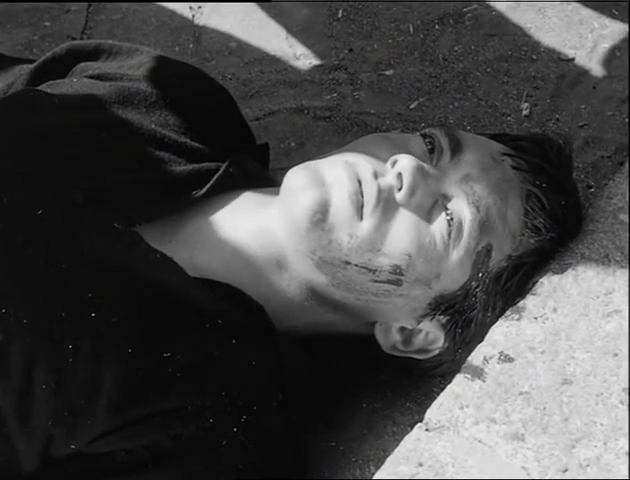
“Ah mo sto bene”
Death plays an important role in this film. The film starts with a wager about death and the film ends with death. Death makes its first appearance in a travelling shot showing Accattone talking with his companion Balilla; this scene ends with a funeral procession: an obvious foreshadowing of Accattone’s own death.
Balilla: One could almost consider Balilla as the angel of death. The few times Balilla appears Death is alluded to: the first time Balilla appears he is walking out of fire, and joins a scene showing Accattone crying to the men who will be responsible to the change of his life: these are the men who will push Maddalena out of Accattone’s life; we then find Balilla during the travelling shot leading to the funeral procession; and later again Balilla appears in the dream sequence: here is he speaking but Accattone is unable to make out what is being said to him; the last time we see Balilla it is during the last sequence of the film: three companions steal the prosciutto from the truck and Accattone then dies from the fall on the motorcycle. Actually the film fades out on Balilla making a strange sign of the cross, not at all Catholic.
[The motorcycle: this is an obvious reference made to the Angels of Death as presented in Orphée, by Jean Cocteau, another artist obsessed by Greek mythology and sacredness.]
When Accattone first meets Stella he tells her: “Stella, Stella, indicami il camino. Insegna a quest’Accattone la strada giusta.“ [“Star, bright Star, lead me to the right road. Teach this beggar how to walk the right path.”]
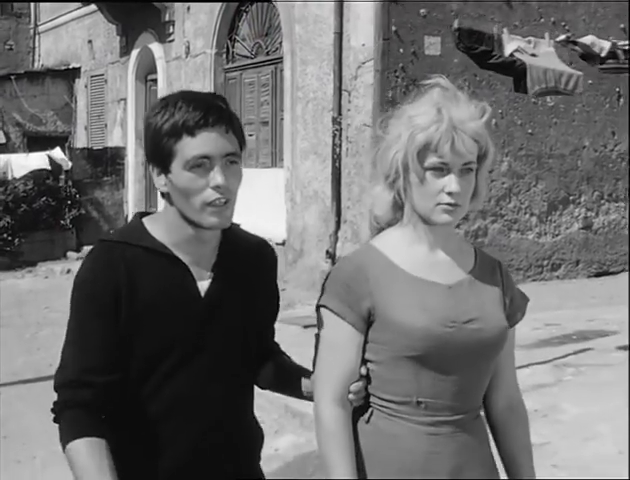
Accattone (Franco Citti) with Stella (Franca Pasut)
Yes, for Accattone to become Vittorio, for him to be victorious, he needs the Star that shines bright in the night. Isn’t it not meaningful the fact that when Accattone initiates Stella to love making he does so by inviting her to a desert landscape? The desert is a symbol that will later play an important role in his major film Teorema.
Paradoxically, though the film is filled with sunlight, Pasolini’s world is as dark as the starless night.
The Star, the Angel of Light, Stella is just a poor woman who tries to make ends meet by working in a scrap yard. Accattone compliments her for knowing nothing of the real world. Stella, symbol of innocence, appears right in the middle of the film. After her appearance the film changes direction. This is also the only time Accattone will call himself Vittorio.
To equate Stella to this symbol of light Pasolini makes her a believer. After Accattone steals his son’s necklace to get money for the necklace he will tie around Stella’s neck right in front of a church. The necklace: A symbol of the past brought to the future? But as we will learn the past can never be brought to the future.
This scene with Stella and Vittorio in front of the church finally camps the film to the level of the sacred. It is with Stella that Pasolini finally pulls us into the world of the sacred.
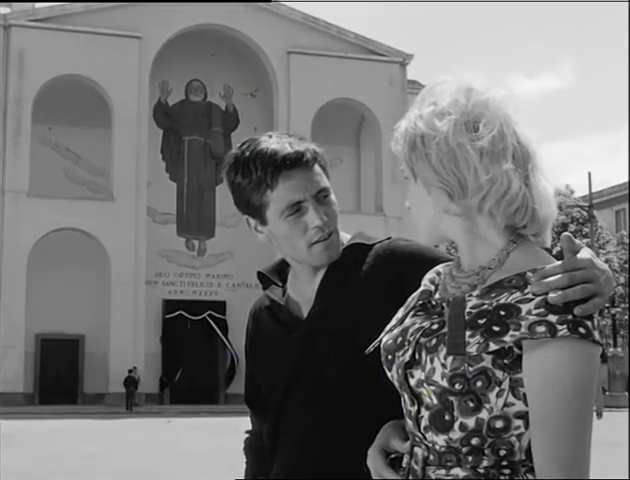
From the start, Pasolini portrays characters who talk like prophets and apostrophe some god in the sky. These men wear many different kinds of masks; masks as icons.
Jacques Aumont has this to say about faces in film: “Le visage de cinéma est double, parce que l’acteur de cinéma représente à la fois lui-même et un autre: première thème, donnant lieu lui-même à un étoilement secondaire” (80). [“The face in film is double, because the film actor is at once representing himself and another: one theme giving birth to a constellation of secondary themes.”] Aumont again: “Ce qui importe c’est que le visage figuré dans toutes les icônes et, par-delà l’icône, dans toutes les images de l’Occident médiéval, ait été un visage supra-humain, ait toujours été, en dernière instance, le visage de Dieu” (20). [What is important about the face depicted in icons, and elsewhere, in many paintings of the Middle Ages in the Western world, is that the face is super-human and ultimately represents the face of God.”] And when this face is brought up to the fore in film, and shot front-wise, it is allowed to judge and confess (160). Yet this closeness to the spectator has nothing to do with psychology or the wish to attract empathy to the characters: as Godard says: what is offered is the cold discourse of politics, bad conscience, repent and shame (138).
Pasolini uses these Im-signs to stress the fact that, though this is hyper-realism, behind these images of stark realism exists another sort of reality. An ancient world that goes back to the sacred world. Pasolini said he wanted to be “a force of the past, more modern than any modernist” (Schwenk, 35).
However, images of the Catholic faith should not be construed solely as religious icons. They are, they could even be considered clichés, nevertheless the sacred character of Accattone is not comparable to the religious characters of Rossellini as depicted in Paisà or The Flowers of St. Francis. For Pasolini, the non-believer that he was, these artefacts belong to popular Italian culture (as spaghetti does), and artistically to Greek mythology. What Roland Barthes considered the studium, when talking of photographs. These living signifiers are part of our realism, part of the Italian reality signified. And as such they can also be the denotation for a new connotation, whereby every denotation leads up to a new level of connotations. With Pasolini nothing on screen is ever only an index or an icon, it becomes a window for another landscape.
The dream sequence occurs after he and Stella become a couple, and so, in many ways, we could equate semantically the dream and Stella. Without Stella, there would be no dream.
Without Stella, there would be no death of Accattone: what is this dream about if not the burial of Accattone, who is not even permitted to fully assist the funeral procession? Accattone is an old skin that must be shed in order for Vittorio to appear.
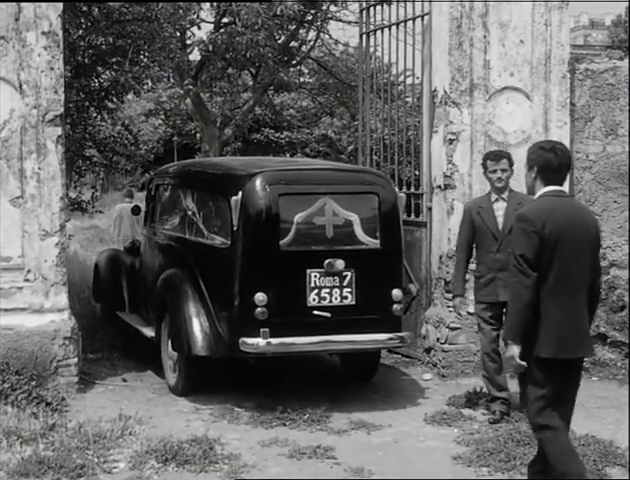
Death Imagery
The ending of the scene is Vittorio dressed in a black suit asking the gravedigger to move his burial site a little out of the shadow of a tree and into the sun.
Compare this dream sequence to Fellini’s dream opening sequence in 8 e mezzo. Guido is a prisoner and is unable to free himself of those who pull him in like a kite. In Pasolini, Accattone dies, yes, but does so in order to give birth to Vittorio.
The film begins with an epigraph by Dante, taken from the Fifth Canto of the Purgatorio:
“l’angel di Dio mi prese, e quel d’ inferno
gradiva: ‘O tu del ciel, perchè mi privi?
Tu te ne porti di costui l’etterno
per una lacrimetta che ‘l mi toglie…”
[“God’s angel took me, and he from Hell cried: ‘Oh you from Heaven, why do you rob me? You are carrying off with you this man’s eternal part for a little tear that takes him from me.’”]
God’s angel, Balilla, waits for Vittorio at the gates of hell and leads him up to heaven. Pasolini has been accused of being a pessimist. He was no doubt, but in Accattone he comes out of this filmic experience as glorious as Bresson or Ozu. Behind these images of pain and death rises una vita nuova.
Bibliography
Roy Armes. Film and Reality: An Historical Survey. London: Penguin Books, 1974.
Rudolf Arnheim. Film as Art. Ninth printing, 1957. Berkeley: University of California, 1974.
Jacques Aumont. Du visage au cinéma. Paris: Cahiers du cinéma, 1992.
Victor Bachy. Notes du cours d’Esthétique du cinéma et de la télévision. Louvain: Université Catholique de Louvain, CETEDI, 1969.
Roland Barthes. Le dégré zéro de l’écriture. 1953. Paris: Éditions du Seuil, 1972, rpt.
Roland Barthes. “Éléments de sémiologie,” in Communications. No. 4 (Numéro spécial: “Recherches sémiologiques”). Paris: Éditions du Seuil, 1964.
Roland Barthes. L’obvie et l’obtus: Essais crtiques III. Paris: Éditions du Seuil, 1982.
Roland Barthes. S/Z. Paris: Éditions du Seuil, Collection “Points,” 1970.
André Bazin. Qu’est-ce que le cinéma? Paris: Éditions du Cerf, 1975.
Jean Duflot. Pasolini: Entretiens avec Pier Paolo Pasolini. Éditions Pierre Belfond, 1970.
Marc Gervais. Pier Paolo Pasolini. Cinéma d’aujourd’hui, 73. Paris: Éditions Seghers, 1973.
Pierre Leprohon. Le cinéma italien. Paris: Éditions Seghers, 1966.
Christian Metz. Essais sur la signification au cinéma. Tome I. Paris: Éditions Klincksieck, Collection d’Esthétique, 1968.
Christian Metz. Essais sur la signification au cinéma. Tome II. Paris: Éditions Klincksieck, Collection d’Esthétique, 1972.
Christian Metz. Langage et cinéma. Paris: Éditions Larousse, Collection “Langue et Langage,” 1971.
Bernhart Schwenk and Michael Semff. Pier Paolo Pasolini and Death. Munich: Hatje Cantz Verlag, 2005.
Cesare Zavattini. “Some Ideas on the Cinema,” in Vittorio De Sica: Contemporary Perspectives, edited by Howard Curle and Stepen Snyder, translated by Pier Luigi Lanza. Toronto: University of Toronto Press, 2000.

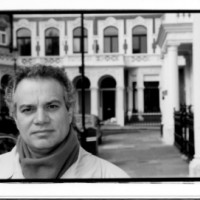

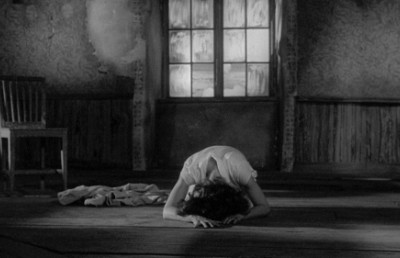
_2_400_258_90_s_c1.jpg)
